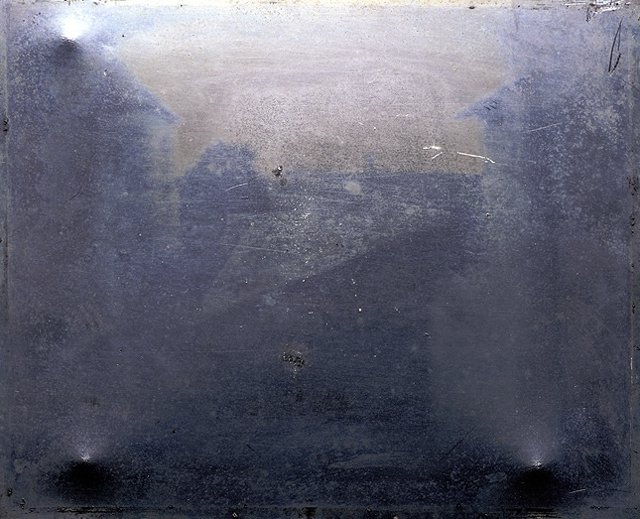
What is called substance, that which stands underneath—“sub:” underneath; “stance:” stands—to be substantial is to be underlying, to be the support, to be the foundation of the world. And of course, this is the great function of the feminine: to be the substance. And therefore, the feminine is represented by space—which is, of course, black at night. But were it not for black and empty space, there would be no possibility whatsoever of seeing the stars. Stars shine out of space, and astronomers—very high-powered astronomers—are beginning to realize that stars are a function of space.
Alan Watts, The Tao of Philosophy
The development of photography spans millennia—from the earliest investigations into the camera obscura in pre-history to the discovery of photosensitive materia in the middle ages. The oldest surviving photograph, a negative image of the French countryside, was taken by Nicephore Niepce sometime in the Winter of 1826 or 1827 on his estate in Saint-Loup-de-Varennes. The photograph—though crude by modern comparison, reportedly developed by exposing a pewter plate coated with a thin layer of Bitumen of Judea—a naturally occurring photosensitive asphalt, to light in a camera obscura for no less than eight hours. The process in this instance more revealing than the resultant. The technique relating photosensitive materia the substratum from what renders the latent image. The negative constituting the (almost) perfect and unchanging representation of objects in the platonic sense of the term. The characteristics of the mater determining the qualities of the impressarum.
BIBLIOGRAPHY: 1. Niépce, Nicéphore. Le point de vue du Gras. 1826. light engraving on bitumen of Judea. Musée Nicéphore Niépce, Chalon-sur-Saone. 2. Watts, Alan. The Tao of Philosophy: The Edited Transcripts. Tokyo: Tuttle Pub, 2002. Print.(2009): 73-78. Print.